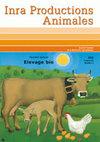Regard philosophique sur la causalité en épidémiologie - approche interdisciplinaire
IF 0.6
4区 农林科学
Q3 Agricultural and Biological Sciences
引用次数: 0
Abstract
Different methods are used by the epidemiologist in order to get as close as possible to the causal nature of the relationship between a factor and a disease. However this is just an interpretation since different circumstances may randomly induce non-causal relationships between factors and disease, but also the effect of other interconnected factors. Philosophy identifies three levels of discussion in the use of causality: the distinction between absolute reality and the one perceived by man given his faculties of knowledge; the difficulty of identifying causes from the observation of natural phenomena because a link between phenomena does not necessarily mean causal succession; the problem of induction, in the sense that more conclusive experiments cannot provide definitive evidence, so that the falsificationists propose challenging the hypothesis by trying new tests to reject it. This interdisciplinary approach enhances the contribution of the philosophical perspective to the epidemiological practice, and more largely to research in biology : among others searching for study contexts adapted to challenge the results, establishing a combination of different and complementary arguments to get closer to causality, which draw a link to the ten causality criteria used by epidemiologists to evaluate and discuss the causal nature of a relationship. In conclusion, having a severe critical look at the result is the only way to add credit to the interpretation of a statistically significant relationship in terms of causality.流行病学因果关系的哲学视角-跨学科方法
流行病学家使用不同的方法,以便尽可能接近某一因素与某种疾病之间关系的因果性质。然而,这只是一种解释,因为不同的情况可能随机导致因素与疾病之间的非因果关系,但也有其他相互关联的因素的影响。哲学认为,在运用因果关系时,有三个层次的讨论:一是区分绝对实在与人凭借自己的知识能力所认识到的实在;从对自然现象的观察中找出原因的困难,因为现象之间的联系并不一定意味着因果连续性;归纳法的问题,在某种意义上,更多的结论性实验不能提供明确的证据,因此证伪论者建议通过尝试新的测试来拒绝假设。这种跨学科的方法增强了哲学视角对流行病学实践的贡献,更大程度上是对生物学研究的贡献:在其他研究中,寻找适合挑战结果的研究背景,建立不同和互补论证的组合,以更接近因果关系,这与流行病学家用来评估和讨论关系的因果性质的十个因果标准联系起来。总之,从因果关系的角度来看,对结果进行严格的批判性审视是为统计上显著的关系的解释增加可信度的唯一方法。
本文章由计算机程序翻译,如有差异,请以英文原文为准。
求助全文
约1分钟内获得全文
求助全文
来源期刊

Inra Productions Animales
Multiple-
CiteScore
1.30
自引率
33.30%
发文量
0
审稿时长
>36 weeks
期刊介绍:
This journal publishes scientific update reports, results of experiments and their possible applications, analyses on topical issues and presentation of research, information on scientific events and new publications.
INRA Productions Animales deals with all species of zootechnical interest (herbivores, monogastrics and fish), covering feed and nutrition, physiology, pathology, genetics, production techniques, product quality and production economics.
 求助内容:
求助内容: 应助结果提醒方式:
应助结果提醒方式:


